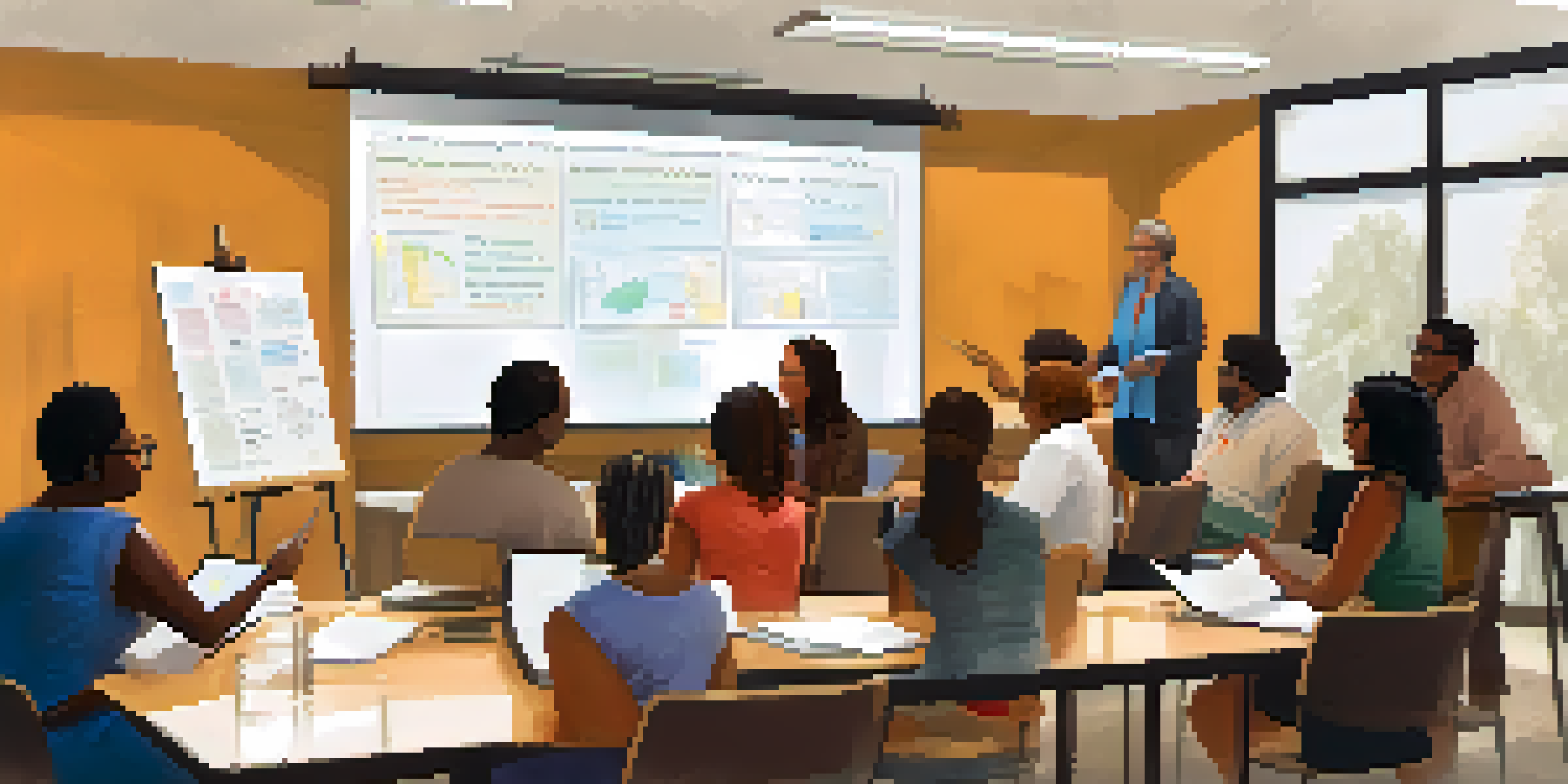Financial Literacy for Nonprofits: Building Community Wealth

Understanding Financial Literacy in Nonprofits
Financial literacy refers to the ability to understand and effectively use various financial skills. For nonprofits, this means not just managing funds but also empowering the community they serve. It's about creating a culture where everyone understands the basics of budgeting, investing, and saving.
Financial literacy is not just about managing money; it's about managing your life.
When nonprofits embrace financial literacy, they not only improve their own sustainability but also help community members gain confidence in managing their personal finances. This dual focus can lead to stronger, self-sufficient communities. Essentially, financial literacy becomes a shared goal.
A nonprofit that prioritizes financial education can become a beacon of knowledge and resources. By providing workshops or one-on-one training, they can transform the financial landscape of their community, making it more resilient and prosperous.
The Importance of Community Wealth Building
Community wealth building is about creating an economy that benefits everyone, not just a select few. For nonprofits, this means focusing on local initiatives that support economic equality and sustainability. By investing in community-focused projects, nonprofits can help distribute resources more evenly.

When nonprofits promote community wealth, they encourage local ownership and investment. This can manifest in various ways, such as supporting local businesses or creating cooperatives. The result is a thriving ecosystem where money circulates within the community, fostering growth.
Empowering Communities Through Literacy
Financial literacy enables nonprofits to enhance their sustainability while empowering community members to manage their personal finances.
Moreover, building community wealth helps to break the cycle of poverty. When individuals have access to resources and knowledge, they can make better financial decisions, ultimately leading to improved quality of life. Nonprofits play a crucial role in facilitating this transformation.
Strategies for Enhancing Financial Literacy
There are several effective strategies nonprofits can employ to enhance financial literacy among their constituents. Workshops, online courses, and community events can provide valuable information in an engaging format. The key is to tailor the content to the audience’s needs and interests.
The greatest weapon against poverty is education.
Additionally, partnering with local financial institutions can offer resources and expertise that nonprofits might lack. These partnerships can help create a network of support, providing participants with access to financial products and services that suit their needs. It’s all about collaboration.
Finally, incorporating storytelling can be a powerful tool in financial education. Sharing success stories of individuals who have benefited from financial literacy initiatives can inspire others to take action. It makes the concepts relatable and shows the real-life impact of financial knowledge.
The Role of Technology in Financial Education
In today’s digital age, technology plays a pivotal role in enhancing financial literacy. Nonprofits can leverage online platforms to reach a wider audience, offering virtual classes or webinars that educate people on various financial topics. The convenience of online learning can significantly increase participation.
Moreover, mobile apps and tools can provide ongoing support, allowing individuals to track their spending, set budgets, and plan for the future. By integrating technology into financial education, nonprofits can empower community members with resources that are accessible anytime, anywhere.
Building Community Wealth Together
Nonprofits play a crucial role in fostering local economic equality by supporting initiatives that promote community ownership and investment.
However, it’s important to ensure that these technologies are user-friendly and inclusive. Not everyone has the same level of digital literacy, so providing guidance and support can help bridge the gap. This way, all community members can benefit from the resources available.
Measuring the Impact of Financial Literacy Programs
To understand the effectiveness of financial literacy initiatives, nonprofits must establish clear metrics for success. This could include tracking the number of participants, their progress in financial knowledge, or changes in their financial behaviors. Having measurable goals helps in evaluating the impact.
Qualitative feedback is equally important; collecting testimonials and stories from participants can illustrate the program's real-world effects. This information can be invaluable for securing funding and support for future initiatives, demonstrating how financial literacy changes lives.
Additionally, conducting surveys before and after programs can provide insights into knowledge gained and behavior changes. This data not only aids in refining existing programs but also helps nonprofits advocate for the importance of financial literacy in their communities.
Overcoming Barriers to Financial Literacy
While the benefits of financial literacy are clear, there are barriers that can hinder access to education. These barriers might include lack of trust in financial institutions, cultural differences, or even previous negative experiences with money management. Nonprofits must be aware of these challenges.
To overcome these obstacles, nonprofits should create a safe and inclusive environment where community members feel comfortable discussing their financial concerns. Building trust through transparency and consistent support can encourage participation and engagement in financial education programs.
Overcoming Barriers to Education
Addressing cultural differences and building trust are essential for nonprofits to effectively engage community members in financial education programs.
Moreover, customizing educational materials to reflect the community’s unique context can make a significant difference. By addressing specific cultural or socioeconomic factors, nonprofits can ensure that their programs resonate with participants, ultimately leading to better outcomes.
Fostering a Culture of Financial Empowerment
Creating a culture of financial empowerment within a community requires ongoing effort and commitment. Nonprofits can lead by example, integrating financial literacy into their mission and daily operations. This commitment not only strengthens their organization but also inspires community members.
Encouraging open conversations about money and financial goals can help demystify financial topics. When community members feel comfortable discussing finances, they are more likely to seek help and share knowledge with others. This creates a ripple effect that can lead to widespread financial awareness.

Lastly, celebrating financial milestones, whether big or small, can reinforce positive behaviors. Recognizing achievements within the community can motivate others to strive for their own financial goals, contributing to a stronger, financially literate community.